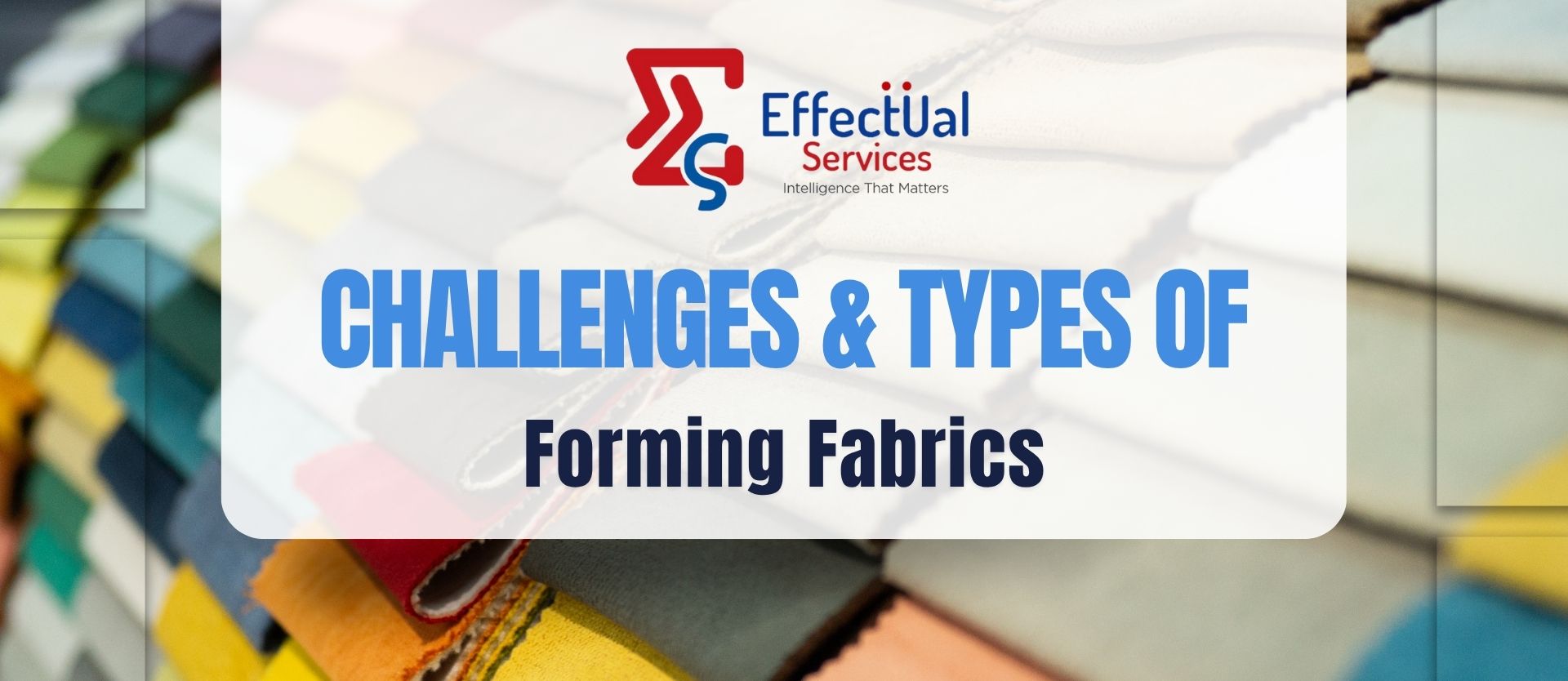Challenges and Types of Forming Fabrics

Challenges in Forming Fabric Development
The development of forming fabrics for paper-making faces several key challenges:
Mechanical Stress and Abrasion Resistance – Forming fabrics must withstand continuous mechanical stress and abrasion from paper fibers and machine components. While nylon offers superior abrasion resistance, its higher water absorption limits its use due to potential dimensional instability.
Chemical Stability – Exposure to chemicals in the paper-making process, such as pH adjusters, retention aids, and cleaning agents, can degrade polymeric materials over time. Polyester provides good chemical resistance, but alternatives must be carefully evaluated for long-term stability.
Dimensional Stability – Forming fabrics must retain their shape and structural integrity despite exposure to water and mechanical forces. Excessive water absorption by monofilaments can lead to swelling, reduced performance, and shorter fabric lifespan.
Sustainability and Recycling – The combination of PET and PA6 in current forming fabrics complicates recycling efforts, increasing waste management costs and environmental impact. A single bio-based polymer that meets all performance requirements could simplify end-of-life disposal and improve sustainability.
Material Innovation – Developing a bio-based polymer with the required mechanical, chemical, and thermal properties is a significant challenge. The material must balance abrasion resistance, low water absorption, and processability while being cost-effective for large-scale adoption in the paper industry.
Addressing these challenges is crucial for the successful implementation of bio-based forming fabrics, ensuring a balance between performance, durability, and environmental benefits.
Biopolymer for Forming Fabrics in Paper-Making
Several biopolymers could be considered for forming fabrics in paper-making, provided they meet durability, abrasion resistance, chemical stability, and low water absorption requirements. Some potential candidates include:
Polylactic Acid (PLA) – A bio-based and biodegradable polymer with good mechanical strength, but its hydrolytic instability and brittleness may limit its use in wet conditions.
Polyhydroxyalkanoates (PHA) – A family of biodegradable polymers with tunable properties, but some variants may have high water absorption.
Bio-based Polyethylene Furanoate (PEF) – A promising alternative to PET with superior barrier properties and potential for high durability.
Bio-based Polyamide (PA) – Derived from castor oil (e.g., PA11, PA12), offering good abrasion resistance and chemical stability with reduced environmental impact compared to PA6.
Cellulose-Based Polymers – Chemically modified cellulose (e.g., cellulose esters) could provide an alternative, but mechanical performance and water resistance need to be optimized.
Types of Forming Fabrics
Forming fabrics are essential components in the paper manufacturing process, serving as a conveyor belt that supports the paper sheet as it forms and drains water from the pulp. The design and structure of these fabrics significantly influence the quality and characteristics of the final paper product. Understanding the different types of forming fabrics is crucial for selecting the appropriate fabric for specific paper production requirements.
Single-Layer Forming Fabric
A single-layer forming fabric consists of one layer of weft (cross-machine direction) and warp (machine direction) yarns woven together. This basic structure is straightforward and cost-effective, offering good drainage properties. However, single-layer fabrics may have limitations in terms of durability and the quality of the paper surface, making them more suitable for producing less demanding paper grades.
Double-Layer Forming Fabric
Double-layer forming fabrics feature two separate layers of weft yarns bound together by shared warp yarns. This configuration allows for different yarn sizes and densities in the top and bottom layers, enhancing sheet support and improving the retention of fine fibers and fillers. The result is a better paper surface quality compared to single-layer fabrics.
Triple-Layer Forming Fabric
Triple-layer forming fabrics consist of three distinct layers:
- Top Layer: Utilizes finer yarns to provide excellent sheet support, enhancing the paper's surface smoothness and uniformity.
- Middle Layer: Serves as a binding layer, connecting the top and bottom layers, contributing to the fabric's overall stability.
- Bottom Layer: Composed of coarser yarns designed to withstand the mechanical stresses of the paper machine, thereby extending the fabric's lifespan.
This multi-layer structure offers superior dimensional stability, improved drainage, and enhanced resistance to wear, making it suitable for producing high-quality paper grades.
Sheet Support Binder (SSB) Forming Fabric
SSB forming fabrics are a type of triple-layer fabric characterized by a specific weave pattern that enhances sheet support and fiber retention. The design increases the density of the yarns on the paper-contact side, leading to improved formation and a smoother paper surface. Additionally, SSB fabrics exhibit high dimensional stability and resistance to internal abrasion, ensuring consistent performance throughout their operational life.
Other Specialized Forming Fabrics
Beyond the standard single, double, triple-layer, and SSB fabrics, there are specialized forming fabrics designed for specific applications:
- 1.5-Layer Forming Fabric: This design incorporates extra yarns into a single-layer structure, providing properties typically associated with double-layer fabrics, such as improved sheet smoothness and retention.
- 2.5-Layer Forming Fabric: Featuring a double-layer weft structure with increased weft density on the sheet side, this fabric offers enhanced sheet support and improved surface properties, making it suitable for fine paper production.
The selection of a forming fabric depends on various factors, including the type of paper being produced, machine configuration, and desired paper properties. Advancements in fabric design continue to focus on improving paper quality, machine efficiency, and fabric longevity.
Future of Bio-Based Polymers in Forming Fabrics for Paper-Making
The future of bio-based polymers in forming fabrics for paper-making looks promising, driven by sustainability goals and regulatory pressures. Advancements in mechanical strength, water resistance, and tailored porosity are improving their performance. Bio-based alternatives reduce microplastic pollution, carbon footprint, and enhance recyclability, though challenges like durability, processing adaptation, and cost remain. Emerging trends include hybrid composites, nanotechnology, enzyme modifications, and 3D printing to enhance properties. As industries shift toward eco-friendly materials, durable and high-performance bio-based forming fabrics are expected to gain wider adoption.
Solutions Driving Innovation & Intelligence
Enabling Fortune 500's, R&D Giants, Law firms, Universities, Research institutes & SME's Around The Globe Gather Intelligence That
Protects and Nurtures Innovation Through a Team of 250+ Techno Legal Professionals.

